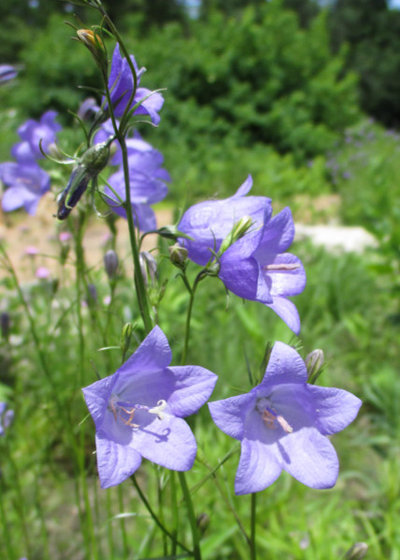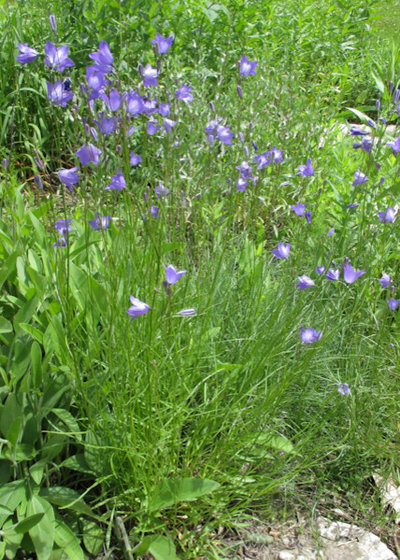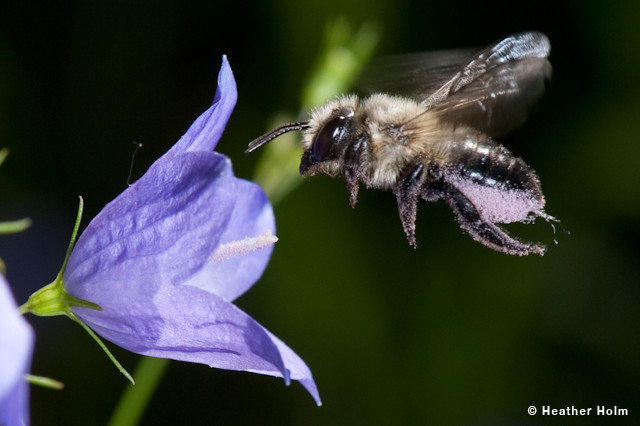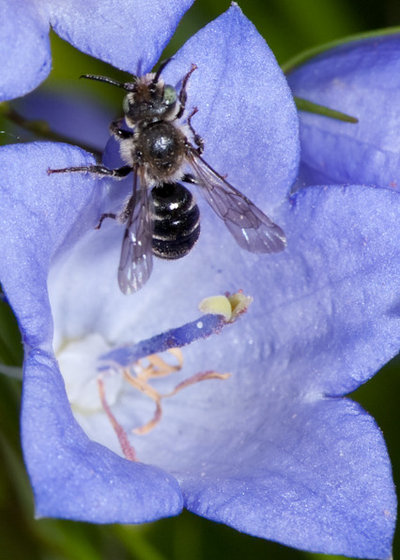There are seemingly endless choices of plants available in the
Campanula genus, but few have the resiliency and native range to compete with bluebell bellflower (
Campanula rotundifolia). Bluebell bellflower is found in so many unique places; go hiking in the mountains in southern Colorado or along the rocky shoreline around Lake Superior and you will find bluebell bellflower growing where many plants do not — in rocky, tough sites.
How do you find similar places in your own landscape that reflect these natural plant communities where bluebell bellflower thrives? Start with the areas around your hardscaping, such as next to a patio, sidewalk or walkway. Enjoy the delicate, nodding blue flowers and finely textured foliage up close as you relax outside.

Holm Design & Consulting LLC
Botanical name: Campanula rotundifoliaCommon name: Bluebell bellflower, harebell
Origin: Native to all of North America except the following states: Nevada, Kansas, Kentucky, Oklahoma, Arkansas, Louisiana and states eastward to Georgia, including Florida.
Where it will grow: Hardy to -55 degrees Fahrenheit (USDA zones 1a to 8b; find your zone)
Typical plant communities: Rocky alpine slopes, rock outcroppings, sand prairies, meadows and sandy beaches
Water requirement: Medium to dry, well-drained soil; sand to loamy sand
Light requirement: Full sun to partial shade
Mature size: 12 inches to 18 inches tall and 6 inches to 12 inches wide
Benefits and tolerances: Tolerates heat from hardscaping
Seasonal interest: Bluebell bellflower begins flowering in late May or early June, putting on a subtle, distinctive display; it will often rebloom during the summer months and into early September.
When to plant: Spring or fall

Holm Design & Consulting LLC
Distinguishing traits. Bluebell bellflower has delicate, fine foliage with many thin, linear leaves. The nodding blue flowers are typically held singly on the flower stalks. Mass plants together for the best display in the garden.
How to use it. Bluebell bellflower is an excellent native plant for gaps in a boulder wall or along the top edge of any hardscape retaining wall. It is also a good choice for use along a sidewalk or walkway, because it tolerates the heat generated from the hardscaping and will not flop over or overpower a path.

Holm Design & Consulting LLC
Planting notes. The seed is dispersed through holes in the seedpods when the wind blows the flower stalks like salt from a saltshaker. The seeds are scattered on the soil surface and require light for germination. A soil mixture with at least 40 percent sand is recommended.
Bluebell bellflower can confuse any gardener, especially if you’re growing it from seed or trying to identify new plants, because the basal leaves are small, round (
rotundifolia) and do not resemble the fine, linear leaves on the flower stalks.
Shown: A female leafcutter bee (
Megachile sp) approaches a bluebell bellflower. Leafcutter bees carry pollen on the underside of their abdomen.

Holm Design & Consulting LLC
Pollinator notes. The flowers have an interesting way of presenting pollen. Pollen is shed from the anthers and drops into the base of the flower. The style is covered in hairs, and as it elongates it picks up the pollen grains and presents the pollen to pollinators.
Bluebell bellflower is regularly visited by small- and medium-size bees, including leafcutter bees (
Megachile spp), resin bees (
Hoplitis spp, shown here), green sweat bees (
Agapostemon spp) and small carpenter bees (
Ceratina spp). Day-flying moths, small butterflies and skippers occasionally visit the flowers — often when bluebell bellflower reblooms later in the summer.





